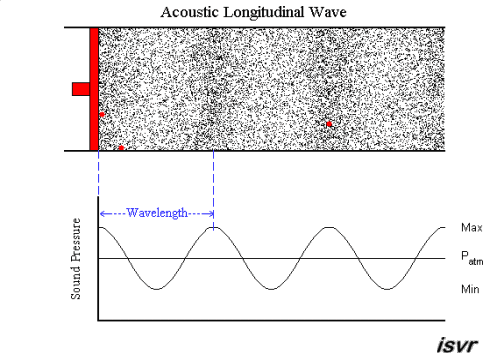Air is a gas, then how is sound wave propagation possible? I mean, gas particles have a tendency to travel in a straight line, so how does a sound wave occur via compression and rarefaction? Most textbooks model this propagation by means of projecting gas molecules as seemingly bound, and oscillating harmonically about their original positions(barring damping). Shouldn't a gas particle leave it's position as soon as mechanical force acts in it,rather than oscillating? A gas ideally should not possess elasticity as portrayed per se?
My question being, how correct is this demonstration of sound wave propagation as a transverse wave one? Do textbooks(the few that I have read), skip the real mechanism, or my assumption is wrong. Could someone please clear this up for me.
Answer
A sound wave is a longitudinal wave - that is, when the membrane of a loudspeaker moves towards the air, it causes compression by pushing molecules towards the stationary air in front of it. That briefly raises the pressure, while those stationary molecules are accelerated and in turn push against the molecules in front of them, etc. So it is a bit like a "chain reaction" or, if you like, a rear-end collision in a traffic jam. Except that the collisions are elastic, so things "bounce back" as well.
An animation may show the local pressure "going up and down", but really, it you consider a sound wave traveling from left to right, then the air molecules are also moving left to right and back again - not up and down.
This is nicely explained with pictures on this web page , in particular this animation. I created a downsampled version of the animation (to fit the 2 MB limit of the site):
but I highly recommend looking at the original on the site. Clearly, the molecules move in the direction of the wave propagation (longitudinally).

No comments:
Post a Comment